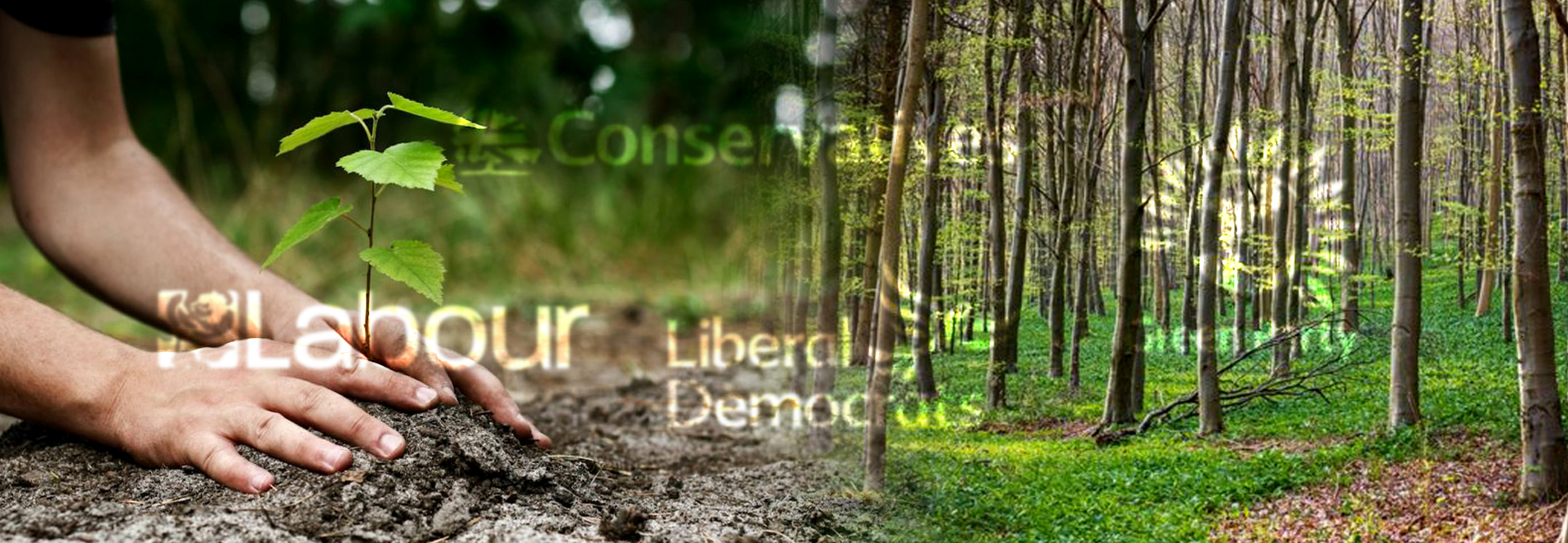“With climate change a hot-button topic, British politicians have promised ambitious tree-planting projects in an effort to store carbon and capture the public’s attention”
We have written here before about the potential of trees to store carbon, thereby helping to ameliorate climate change. Presumably, the leaders of almost all the UK’s political parties have been reading our blogs – as they’ve now acknowledged the potential of tree-planting to store carbon (a greenhouse gas), and committed themselves to ambitious planting quotas in the event they win December’s general election.
The most “conservative” promise comes from the Conservative Party – but even that meets the Committee on Climate Change’s target rates of tree planting to meet the UK’s legally-binding promise to achieve carbon neutrality by 2050. However, the Committee’s targets imply that significantly more planting is possible – opening the door for politicians to promise much higher numbers. The Conservatives have promised to plant 30 million new trees every year. The Liberal Democrats have doubled that figure to 60 million a year. The Green Party promised 70 million a year. And the Labour Party has outdone them all, promising to plant 100 million trees a year (2 billion by 2040, or 270,000 a day).
How possible is all this? That’s a point for discussion. We know that the Conservative promise is achievable. It works out as planting 1,000 trees per hectare (the density recommended by the Woodland Trust) over 30,000 hectares per year. We’ve managed to plant 30,000 hectares before (though not since 1989). Greater promises are as-yet untested… but that doesn’t mean they are unachievable. Given that many voters think the UK’s carbon neutrality target of 2050 is not ambitious enough, we may well find ourselves incentivised to test the upper limits of annual tree planting.
If we do, we will only be closing the gap with our neighbours. Today, 13% of the UK is covered by trees (it fell as low as 5% in 1919) – but that is just a third of the European average (38%). Mass planting is a possible solution for climate change – and the UK could afford to cover plenty of land in trees before it came close to equalling the levels of forestation that its peers already possess. In England alone, the Forestry Commission has identified 3.75 million hectares of suitable land for tree planting – so space is not a problem, although resources might be.
Getting hold of this land, much of which is privately owned by farmers, who make their living from it, poses one problem. Finding access to enough saplings to meet yearly quotas is another. David Slawson, a researcher at Imperial College London said: “If they come from overseas, there is a substantial risk that damaging tree pests and pathogens will be brought to the country. For the sake of national biosecurity, the trees need to be grown — from seed to sapling — in this country. However, our nurseries currently lack the capacity to produce trees in such large numbers. For this reason, a long-term and practical strategy is required to fulfil the ambitious programme of tree-planting.”
Voters with any knowledge of history will know enough to remain sceptical of big promises made during election time. But similar tree planting promises being made from other areas. Water companies in the UK have collectively committed to planting on 6,000 hectares by 2030, Cornwall Council has promised 8,000 hectares by 2030, and Bristol City Council has promised to double tree coverage by 2046. So it looks like trees are finally being appreciated as the climate-change combating tools they are.

